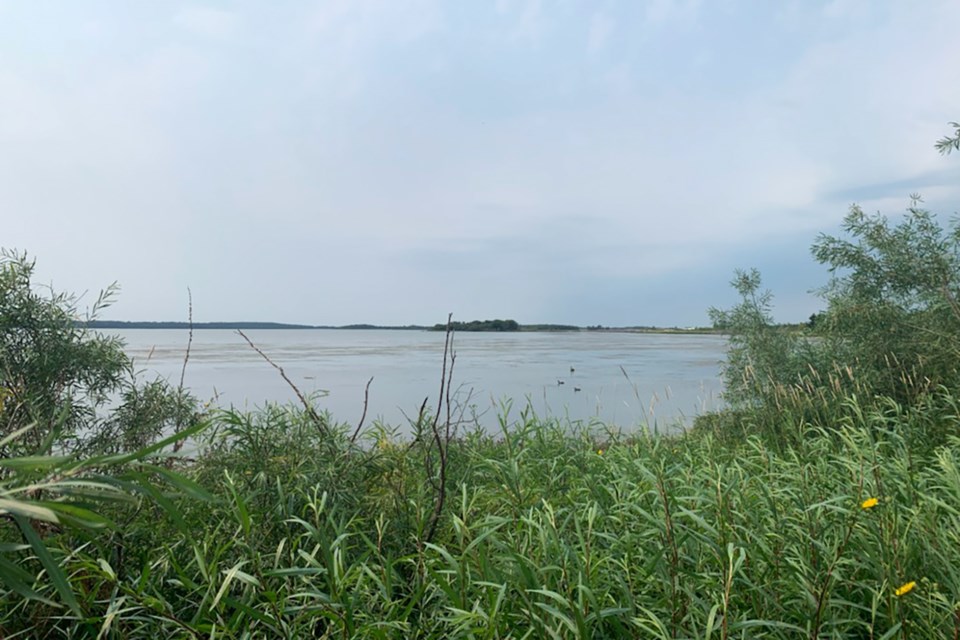ST. PAUL – The Town of St. Paul notified residents at about noon on July 21, to avoid Lagasse Park and the nearby spray park, after a bear had been spotted in the area. The bear was relocated about two hours later and the park re-opened.
According to an email to Lakeland Today from Fish and Wildlife Enforcement Services, after receiving a complaint at about 11:20 a.m, officers responded to a single yearling, black bear laying in the grass along the north shoreline of Upper Therien Lake.
Fish and Wildlife worked alongside local RCMP and community peace officers to deal with the bear.
There were no other bears located in the area, and Fish and Wildlife stated in the email that it is believed the bear may have recently started out on its own, based on its size. The young bear was tranquilized and transported to a rural location where it was released into the wilderness.
RCMP Staff Sgt. Greg Stannard confirmed that RCMP were on hand to help monitor the situation.
“Officers located the bear by the lake, still near the park and monitored it to ensure the safety of the public in the area. Once Fish and Wildlife attended, they tranquilized the bear and moved it out of town,” said Stannard. “The bear was estimated to be a two-year-old and was healthy and breathing well under the tranquilizer.”
Fish and Wildlife reminds residents that much of Alberta is bear country, and lake shores, rivers and creeks often act as travel routes and feeding sites for bears.
“Be extra attentive in travel corridors. Be alert and make as much noise as you can when moving in and around these areas,” states Fish and Wildlife. “We encourage the public to carry bear spray and noise makers.”
Tips to avoid conflict
Enforcement services also provided tips to help people avoid conflict when encountering a bear in the wild. People should stay calm, stay with their group and keep children close while assessing the situation.
In addition, look around, and when you see either cubs or an animal carcass, back away because the bear will want to protect them. But also, be prepared to use bear spray.
If you spot a bear, leave the area from where you came from while keeping an eye on the bear without staring aggressively. Watch for a place to hide, then find a place of safety such as a car or a building as you back away.
Additionally, speak to the bear in a soft, low voice and let the bear know you are not a prey animal but a human. Carrying a noisemaker is also a good idea.
Improperly stored garbage
Black bears have an extremely keen sense of smell, and Fish and Wildlife encourages the public to “manage attractants.”
“Bears that become highly food conditioned and habituated to humans may become a threat to human safety and property.”
To minimize the potential of attracting bears, Fish and Wildlife advises people to keep all garbage securely stored until collection day.
In addition, they advise managing trees and berry bushes by picking ripe and fallen fruit, to take bird feeders down between April and November, to keep pet food indoors, keep barbecues clean and free from odours, manage compost properly, and simply don't feed bears.
To report bear sightings or encounters, people can call the Fish and Wildlife Enforcement Services 24/7 Report A Poacher line at 1-800-642-3800.
*With files from Janice Huser



